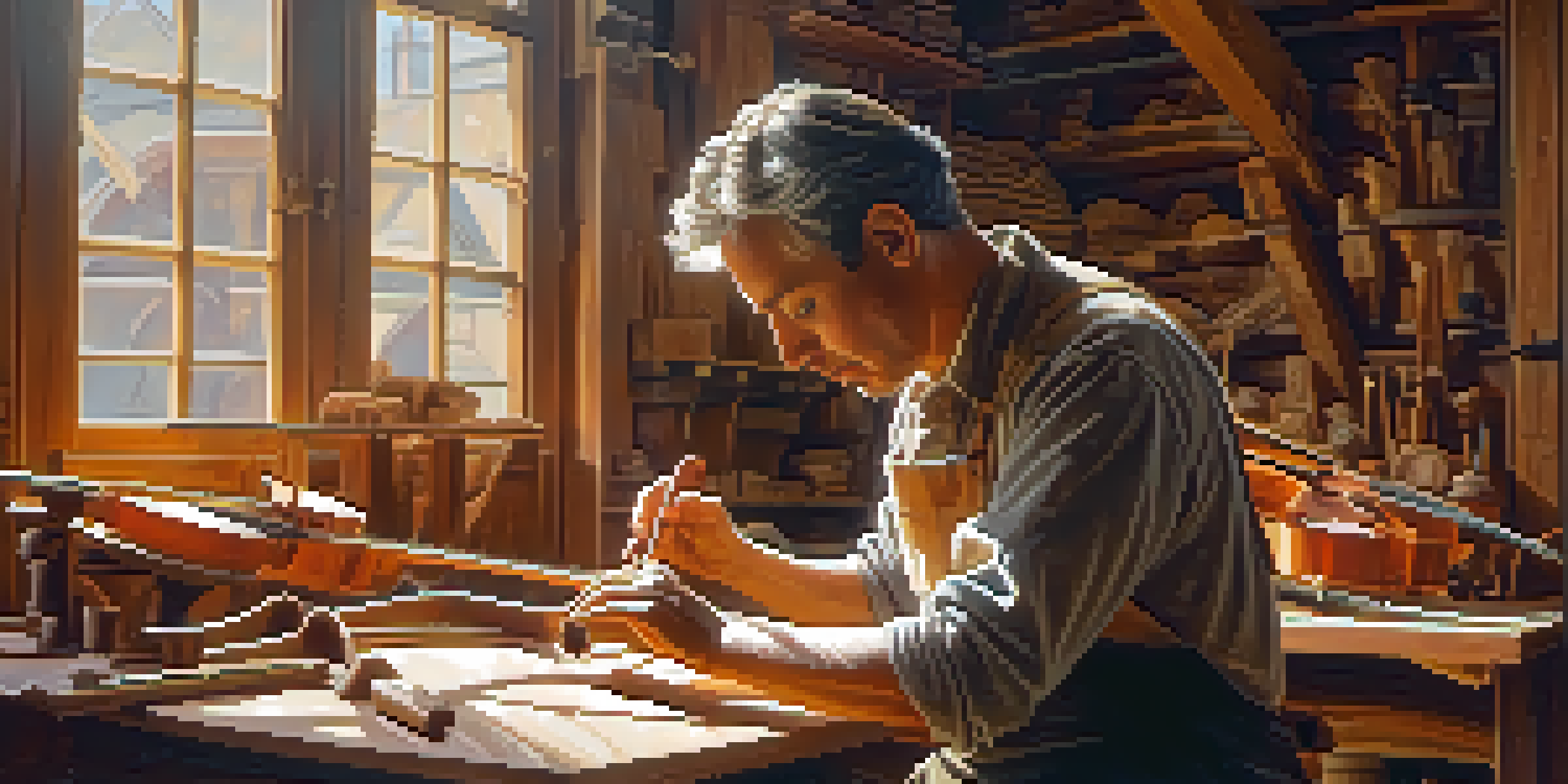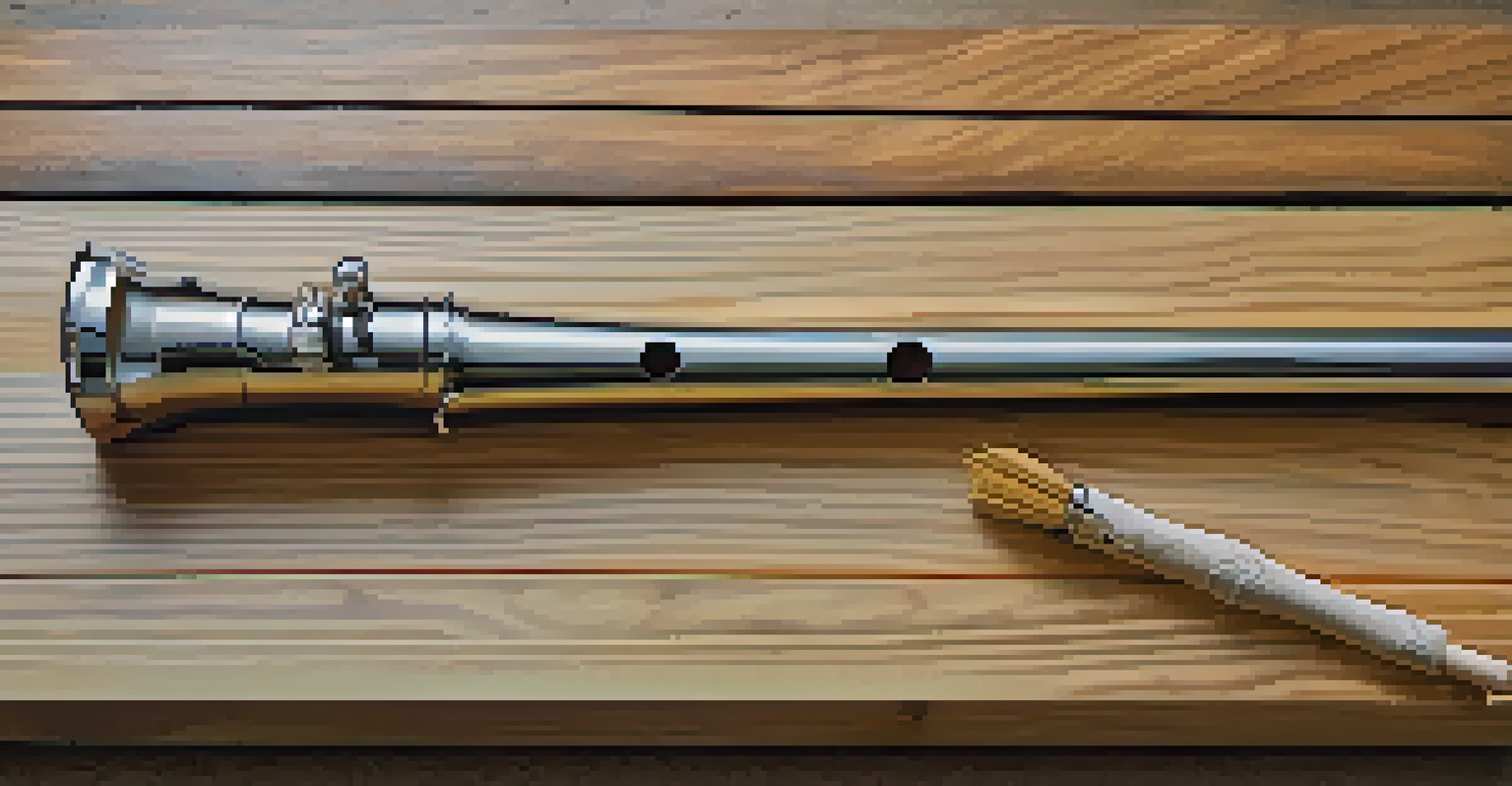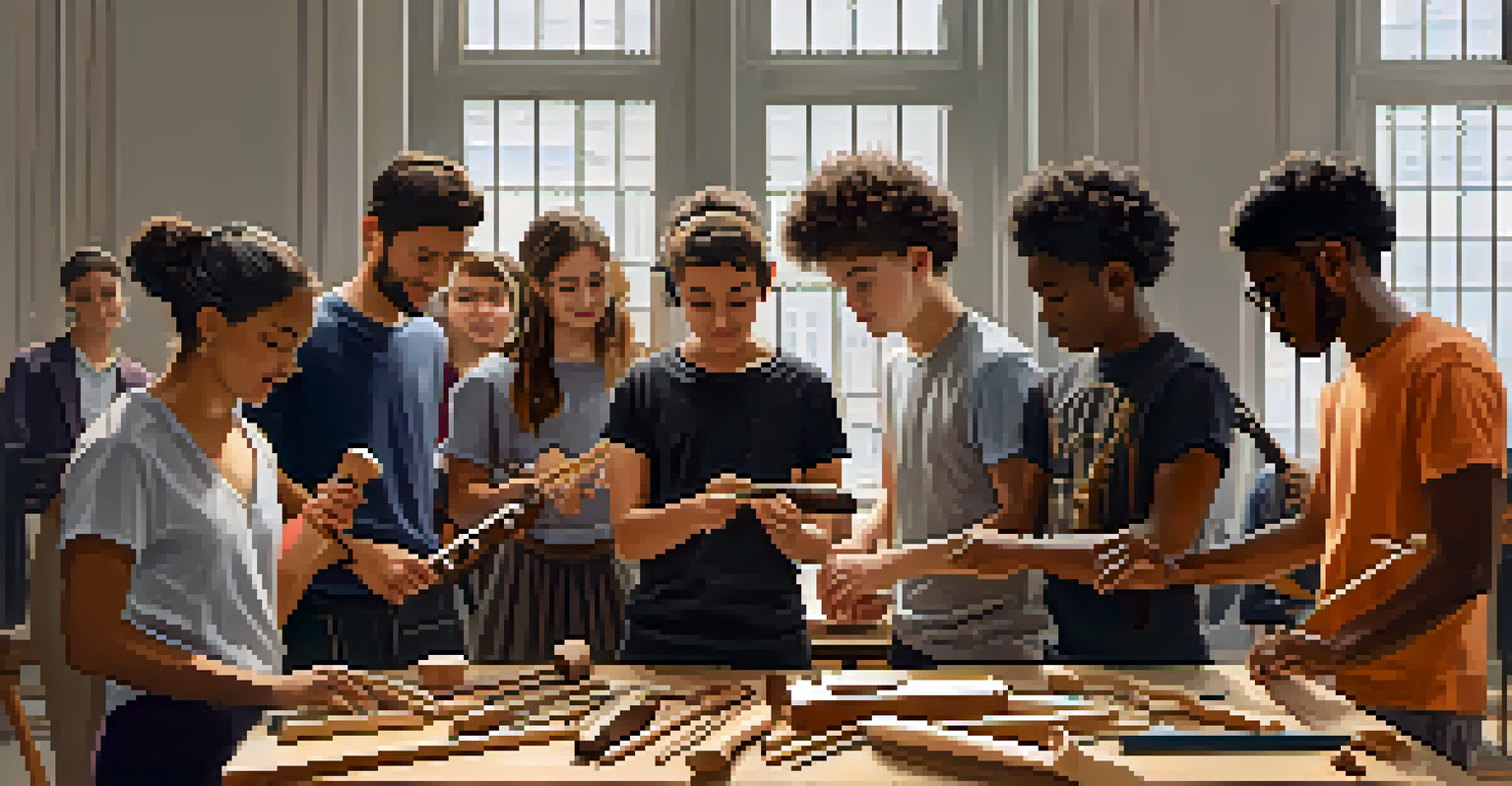Preserving Tradition: The Future of Carving Musical Instruments

The Art of Carving: A Timeless Tradition
Carving musical instruments is an age-old craft that has been passed down through generations. Each instrument tells a story, reflecting the culture and skill of its maker. From violins to flutes, the intricate designs and wood selection are what give these instruments their unique sound and character.
The greatest danger in times of turbulence is not the turbulence; it is to act with yesterday's logic.
Traditionally, artisans relied on hand tools and years of experience to shape wood into beautiful instruments. This process not only requires immense skill but also a deep understanding of the materials used. As technology evolves, the challenge lies in preserving these methods while embracing new innovations.
This blend of old and new is essential for keeping the craft alive. As younger generations become involved in music, they also show interest in the craftsmanship behind their instruments, ensuring that the art of carving remains relevant and appreciated.
Modern Techniques: Blending Tradition with Innovation
With advancements in technology, the way musical instruments are carved is evolving. CNC machines and 3D printing are making it easier to replicate complex designs, allowing artisans to focus more on creativity and less on manual labor. However, this raises questions about authenticity and the soul of handcrafted instruments.

While these modern tools can enhance productivity, they cannot replace the connection that comes from hand-carving. Many artisans are now finding a balance, using technology for precision while still incorporating hand-finished details that give each instrument its individuality.
Craftsmanship Meets Technology
Artisans are blending traditional hand-carving techniques with modern tools like CNC machines to enhance creativity and maintain the uniqueness of each instrument.
This hybrid approach not only preserves the traditional methods but also attracts a new audience who appreciates both craftsmanship and innovation. As a result, we see a resurgence of interest in handcrafted instruments that fuse the best of both worlds.
Sustainability in Instrument Carving: A Growing Concern
As awareness of environmental issues rises, sustainability has become a crucial factor in instrument carving. Many traditional woods, such as rosewood and mahogany, are becoming scarce, prompting artisans to seek alternative materials. This shift not only helps protect endangered species but also encourages creativity in using sustainable resources.
Sustainability is no longer about doing less harm. It's about doing more good.
Some craftsmen are now exploring reclaimed wood, which not only gives instruments a unique history but also reduces waste. This practice aligns with modern consumers' values, who are increasingly looking for eco-friendly options in their purchases.
By adopting sustainable practices, artisans can preserve the integrity of their craft while appealing to a new generation of environmentally conscious musicians. This commitment to sustainability is vital for the future of both carving and the planet.
The Role of Education in Preserving Craftsmanship
Education plays a pivotal role in ensuring the survival of traditional instrument carving. Workshops, apprenticeships, and online courses are helping to pass down invaluable skills to aspiring artisans. By learning from seasoned craftsmen, students gain hands-on experience that is essential for mastering this intricate art form.
Moreover, educational programs are adapting to include modern techniques, allowing students to explore both traditional methods and contemporary innovations. This comprehensive approach prepares the next generation to innovate while honoring the past.
Sustainability in Instrument Making
The shift towards sustainable materials, such as reclaimed wood, is essential for protecting the environment while preserving the integrity of musical instrument craftsmanship.
As more people engage in these educational opportunities, we can expect a revitalization of interest in carving musical instruments. This enthusiasm is crucial for keeping the tradition alive and thriving in an ever-changing world.
Global Influences: Carving Across Cultures
Carving musical instruments is not limited to one culture; it is a global phenomenon with rich traditions found in every corner of the world. Each culture brings its unique style, materials, and techniques, resulting in a diverse array of instruments. From the sitar in India to the djembe in Africa, these variations reflect local customs and musical styles.
As globalization increases, different carving techniques are influencing each other, leading to innovative hybrid instruments. Musicians are increasingly blending elements from various cultures, creating new sounds and expanding the horizons of music.
This cross-cultural exchange enriches the world of music while fostering a greater appreciation for the art of carving. By understanding and celebrating these global influences, we can preserve the diversity and creativity that define musical instrument craftsmanship.
The Impact of Technology on Musical Instrument Sales
In the digital age, online platforms have revolutionized how musical instruments are marketed and sold. Artisans can now reach a broader audience, showcasing their carved masterpieces on websites and social media. This increased visibility allows them to share their stories and connect with potential buyers in ways that weren't possible before.
However, this shift also means that artisans must navigate the challenges of standing out in a crowded digital marketplace. Effective branding and storytelling become essential components of their marketing strategy. By highlighting the craftsmanship and unique features of their instruments, artisans can attract discerning customers who value quality.
Education Preserves Artistry
Educational programs that incorporate both traditional and modern techniques are vital for passing down the intricate skills needed for carving musical instruments to future generations.
As online sales continue to grow, the relationship between artisans and consumers becomes more direct. This connection not only boosts sales but also fosters a sense of community among musicians and makers, further preserving the art of carving musical instruments.
Looking Ahead: The Future of Carving Musical Instruments
The future of carving musical instruments lies in the delicate balance of tradition and innovation. As artisans adapt to changing consumer preferences and technological advancements, they must remain true to the essence of their craft. This ongoing evolution will shape the way instruments are made and appreciated in the years to come.
By embracing sustainability, education, and global influences, the next generation of craftsmen can ensure that the art of carving continues to thrive. This commitment to preserving tradition while exploring new possibilities will keep the spirit of musical instrument carving alive.

Ultimately, as musicians continue to seek unique and meaningful instruments, the craftsmanship behind them will remain a vital part of the music community. The future is bright for those dedicated to the art of carving, as they carve out their own legacy in the world of music.